What is Sake?
History, Culture, Flavor,
and NRIB’s Initiatives
As an introduction to sake,
this video explains the background (history and culture)
and production process of sake.
It also introduces the efforts of the NRIB,
which has laid the foundation for science in sake brewing in Japan.
Pick up Sake Terminology
The sake terminology is explained in the video,
so check it out.
rice cultivars suitable for sake making
Distribution map of
shuzo-kotekimai
(sake-brewing rice)
Sake is an alcoholic drink made from rice.
There are currently hundreds of varieties of rice cultivated in Japan, some of which are used to make sake brewed in the country.
Amidst all these varieties, those that are especially ideal for making sake are called shuzo-kotekimai(sake-brewing rice). Differing from rice made for eating, it is low in protein, easy to dissolve in the mash at low temperatures over a long period, and has properties that make its alcohol fermentation progress favorably.
Yamadanishiki is the most commonly used variety of rice that is well-suited for sake brewing, but many other types of rice for brewing are grown throughout Japan.
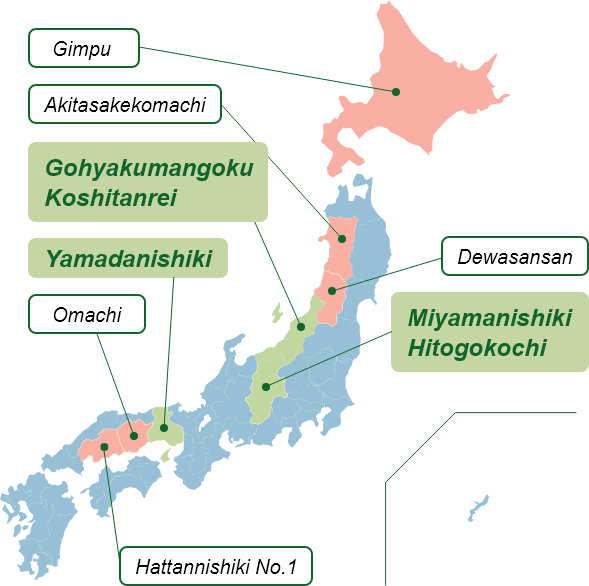
| Rice variety | Main harvested site (prefecture) |
|---|---|
| 1 Yamadanishiki | Hyogo, Okayama, etc. |
| 2 Gohyakumangoku | Niigata, Toyama, etc. |
| 3 Miyamanishiki | Nagano, Akita, etc. |
Sake brewing process
Sake, just like wine and beer, is made through the fermentation of yeast. Fermentation is the process whereby yeast (a kind of microbes) produces alcohol and carbondioxide from sugar. Sake is made from rice, koji, and water. Alcohol may also be added. Here is an outline of the process of making sake.
-
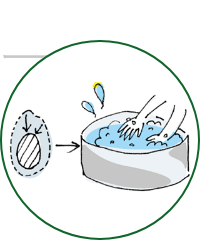
- ①
Polishing, washing, and soaking the rice - After the outer portion of the rice grain is removed in a process called polishing, the remaining rice is carefully washed and then soaked to absorb water.
- ①
-

- ②
Steaming the rice - The rice is steamed.
- ②
-
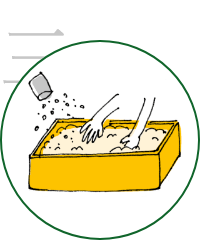
- ③
Making koji - Over about two days, a fungi called koji mold is propagated onto the steamed rice in a special room.
- ③
-
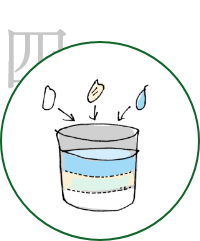
- ④
Making the moromi (fermentation mash) - Steamed rice, koji, water, and a yeast starter are added into a large tank and mixed to start alcohol fermentation.
- ④
-
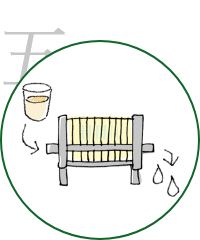
- ⑤
Pressing the moromi - The moromi is pressed to separate the liquid (sake) from the sake lees (kasu).
- ⑤
Resources
You can check the detailed information of the introduced contents from the link below.